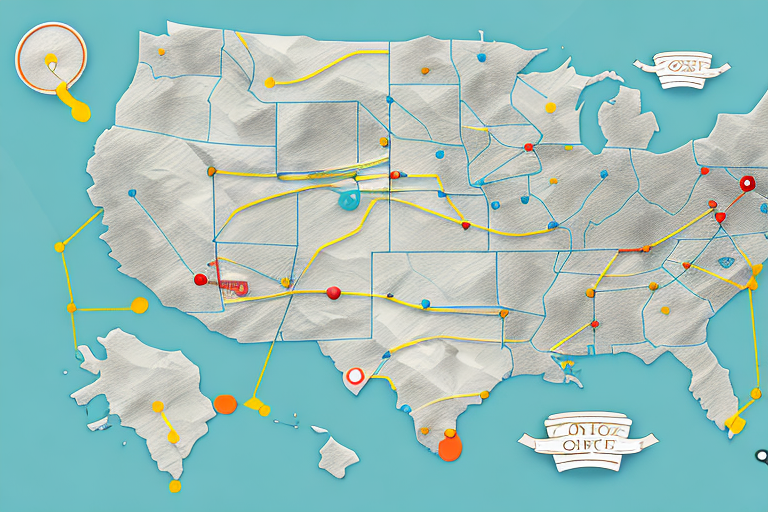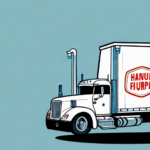How to Optimize Courier Routing Order for Maximum Efficiency
In today’s fast-paced and competitive business environment, efficient courier routing is essential for ensuring customer satisfaction and reducing delivery costs. By optimizing the courier routing order, businesses can minimize delivery time, cut down on fuel consumption, decrease vehicle wear and tear, and enhance overall operational efficiency. Achieving optimal courier routing requires a comprehensive understanding of factors such as delivery destinations, vehicle capacity, traffic conditions, and delivery time windows.
The Importance of Efficient Courier Routing
Efficient courier routing is pivotal for ensuring on-time deliveries and maintaining high customer satisfaction levels. According to a Statista report, over 70% of customers prioritize quick and reliable delivery services when choosing a courier provider. Delays or mishaps can lead to negative reviews and loss of business.
Businesses that neglect courier routing optimization may face higher transportation costs, increased fuel consumption, and longer delivery times. Implementing advanced routing solutions not only saves time and money but also contributes to reducing the carbon footprint of courier services.
Leveraging Technology for Routing Efficiency
Advanced routing software can analyze real-time data, including traffic, weather, and delivery schedules, to identify the most efficient routes. Tools like Google Maps and Geopointe offer features that aid in route optimization, leading to significant cost and time savings.
Enhancing Communication
Effective communication between couriers and dispatch teams is crucial. Real-time updates on delivery progress and potential delays enable dispatchers to make necessary adjustments to routing plans, ensuring timely deliveries and maintaining customer trust.
Factors Affecting Courier Routing Order Optimization
Optimizing courier routing involves considering multiple factors to create the most efficient delivery sequence:
- Delivery Destinations: Grouping nearby locations reduces travel time and fuel consumption.
- Vehicle Capacity: Planning deliveries based on package size and weight maximizes vehicle utilization.
- Delivery Time Windows: Prioritizing deliveries with specific time frames ensures on-time service.
- Traffic Conditions: Analyzing traffic patterns helps avoid congested routes.
- Weather Conditions: Monitoring weather forecasts allows for adjustments in routing to ensure safety and timely deliveries.
Delivery Destinations
Grouping delivery locations that are geographically close minimizes travel distances, reducing both delivery time and fuel costs. According to a study by the Brookings Institution, optimized routing can lead to a 15-20% reduction in delivery times.
Vehicle Capacity and Package Management
Efficiently utilizing vehicle capacity by considering package size and weight is essential for maximizing delivery efficiency. This practice not only reduces the number of trips required but also minimizes the wear and tear on delivery vehicles.
Delivery Time Windows
Managing deliveries within specified time windows enhances customer satisfaction. Implementing scheduling software that accounts for these time constraints ensures that deliveries are made within the promised timeframes.
Traffic and Weather Considerations
Real-time monitoring of traffic and weather conditions allows businesses to adjust routes dynamically, avoiding delays caused by congestion or adverse weather. Tools like Waze provide up-to-date traffic information that can be leveraged for route adjustments.
Analyzing Delivery Data for Better Routing Decisions
Data analysis is fundamental to optimizing courier routing. By collecting and analyzing various data points, businesses can identify patterns and make informed routing decisions that enhance efficiency and reduce costs.
Key Data Points
- Delivery addresses
- Package sizes and weights
- Delivery time windows
- Traffic conditions
- Vehicle capacity
Utilizing data analytics tools like Tableau or Microsoft Power BI can help businesses visualize and interpret data to create customized routing plans that maximize efficiency.
Tracking Delivery Performance
Monitoring metrics such as delivery times, missed deliveries, and customer feedback allows businesses to identify areas for improvement. Continuous performance tracking leads to iterative adjustments in routing plans, resulting in increased efficiency and customer satisfaction.
Best Practices for Designing Efficient Courier Routes
Implementing best practices in route design is essential for optimizing courier operations:
Grouping Nearby Deliveries
Organizing deliveries that are in close proximity to each other can significantly reduce travel time and fuel costs.
Flexible Routing Plans
Developing flexible routing plans that can be adjusted based on real-time traffic and delivery conditions ensures adaptability and efficiency.
Prioritizing Time-Sensitive Deliveries
Ensuring that deliveries with specific time windows are prioritized helps maintain high levels of customer satisfaction.
Regular Vehicle Maintenance
Maintaining delivery vehicles in optimal condition reduces the likelihood of breakdowns and ensures efficient operation.
Utilizing Technology
Implementing GPS tracking and route optimization software, such as Route4Me, can enhance route efficiency by providing real-time adjustments and optimizations.
How to Use Mapping Tools for Courier Routing Optimization
Mapping tools are integral to optimizing courier routing by analyzing delivery locations and determining the most efficient paths. These tools use sophisticated algorithms that account for traffic patterns, road networks, and geographic information to calculate optimal routes.
Benefits of Mapping Tools
- Reduced Delivery Times: Identifying the shortest and fastest routes minimizes delivery times.
- Cost Savings: Efficient routing reduces fuel consumption and vehicle maintenance costs.
- Expanded Delivery Coverage: Mapping tools help identify underserved areas, enabling businesses to expand their delivery reach based on demand.
Popular mapping tools include Google Maps, Mapbox, and OpenStreetMap, each offering unique features for route optimization.
Implementing Real-Time Tracking Systems to Improve Efficiency
Real-time tracking systems provide businesses with up-to-date information on the locations of delivery vehicles, enabling dynamic route adjustments and improved efficiency.
Advantages of Real-Time Tracking
- Optimized Routing: Immediate adjustments to routes based on real-time data prevent delays.
- Enhanced Customer Communication: Providing customers with accurate delivery updates increases satisfaction.
- Cost Reduction: Optimizing routes in real-time lowers fuel consumption and vehicle maintenance costs.
Solutions like Geotab and Teletrac Navman offer robust real-time tracking capabilities that can be integrated into courier operations.
Strategies for Minimizing Delivery Time and Cost with Optimal Routing
Effective strategies for reducing delivery time and costs through optimal routing include:
Optimized Routing Plans
Creating routing plans that consider delivery destinations, vehicle capacity, and specific time windows can significantly reduce overall delivery time and fuel consumption.
Regular Vehicle Maintenance
Maintaining vehicles ensures they operate efficiently, reducing the likelihood of costly repairs and downtime.
Real-Time Tracking and Monitoring
Utilizing real-time tracking systems allows for immediate route adjustments based on traffic conditions and unexpected delays, ensuring timely deliveries.
Alternative Delivery Methods
Incorporating methods such as bike couriers or drones for smaller packages and shorter distances can be more cost-effective and environmentally friendly, particularly in congested urban areas.
Overcoming Common Challenges in Courier Routing Optimization
Courier routing optimization presents several challenges, including fluctuating traffic conditions, unpredictable weather, and varying package sizes. However, leveraging technology and data analysis can help address these obstacles effectively.
Ensuring Timely Deliveries
For time-sensitive deliveries, such as medical supplies or perishable goods, predictive analytics can forecast potential delays and enable route adjustments. Real-time tracking systems facilitate proactive communication with customers, managing expectations and maintaining satisfaction.
Balancing Efficiency with Cost-Effectiveness
Balancing the need for speed with cost constraints involves using route optimization software that considers traffic patterns, package dimensions, and delivery windows to find the most efficient and cost-effective routes.
The Role of AI and Machine Learning in Optimizing Courier Routing Order
Artificial Intelligence (AI) and Machine Learning (ML) play a transformative role in courier routing optimization by analyzing vast amounts of data to identify patterns and make informed routing decisions.
Real-Time Data Integration
AI and ML algorithms can process real-time data on traffic, weather, and delivery statuses, allowing for dynamic route adjustments that enhance delivery efficiency and reliability.
Multi-Factor Optimization
These technologies can optimize routes based on multiple factors simultaneously, such as selecting routes that are not only the fastest but also the most fuel-efficient or those that minimize vehicle wear and tear.
Platforms like IBM Watson and SAS Machine Learning offer AI-driven solutions that can be integrated into courier routing systems to achieve superior optimization.
Benefits of Optimized Courier Routing for Customers and Businesses
Optimized courier routing offers substantial benefits for both customers and businesses:
- For Customers:
- Faster and more accurate deliveries lead to higher satisfaction and repeat business.
- Real-time tracking provides customers with up-to-date information on their packages.
- For Businesses:
- Lower delivery costs through reduced fuel consumption and vehicle maintenance.
- Improved operational efficiency enhances overall business performance.
- Higher customer satisfaction fosters brand loyalty and positive reviews.
- Reduced environmental impact by minimizing fuel usage and vehicle emissions.
Future Trends in Courier Routing Optimization Techniques
The future of courier routing optimization is set to be shaped by technological advancements and innovative solutions. Emerging trends include:
Drones and Autonomous Vehicles
Unmanned aerial vehicles and self-driving cars are poised to revolutionize the courier industry, offering faster and more efficient delivery methods, especially in urban and congested areas.
Enhanced AI and ML Capabilities
Continued advancements in AI and ML will enable more sophisticated routing algorithms that can handle increasing complexity and variability in delivery scenarios.
Integration with IoT Devices
Internet of Things (IoT) devices will provide more granular data on vehicle performance, package conditions, and environmental factors, further enhancing route optimization capabilities.
Sustainability Initiatives
As businesses prioritize sustainability, courier routing optimization will increasingly focus on minimizing environmental impact through fuel-efficient routes and the use of eco-friendly delivery methods.
Optimizing courier routing order is essential for businesses aiming to reduce delivery costs and enhance customer satisfaction. By leveraging data analysis, mapping tools, real-time tracking systems, and AI-driven technologies, businesses can achieve higher efficiency and adapt to evolving industry demands. As new technologies emerge, the potential for even greater optimization and innovation in courier routing continues to grow.






















